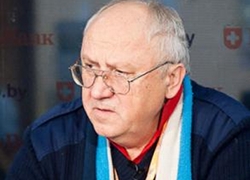Leanid Zaika: Belarusian ruble is bottomless
15- 5.01.2015, 17:40
- 68,043

There is a paper membrane placed instead of the bottom, and it becomes leaky and then breaks through.
Today the US dollar has rocketed by 840 rubles higher, and the fee on currency sale has been reduced to 10%. Even before her dismissal, Nadzeja Yarmoshyna, chairperson of the National Bank, promised that the fee is to disappear gradually, by the middle of February, and the ruble is to become stable by that time as well. But it’s the 5th of January now, and the real exchange rate of the hard currency is growing at such a speed that soon it is going to cross the line which could have been reached by one-time devaluation. What is happening with the Belarusian ruble and how dynamic the further plunge is going to be, an economist Leanid Zaika was asked by charter97.org.
- There is nothing unexpected in that. This plunge is taking place as the Belarusian ruble had been overvalued. And in addition, if we look at the situation in December, paradoxically enough, we had positive export, and strictly speaking, there is no point in devaluation as such in this situation. But we have a debt of about $40 bn. Imagine, it means about 300 mln dollars of deficit per month, and one should have to find means for paying. That’s why there is a high demand for currency. One-time devaluation could have been held certainly, for example, one dollar could cost Br15,000. But that would not stop devaluation process, as the confidence to the Belarusian ruble is low. So now devaluation is going according its own logics.
- Who receives the difference in the two exchange rates of dollar in the country?
- First the decision was made that there is no devaluation, but 30% of the price were introduced because of “speculators” and taken to the budget. Then the 30% were reduced to 20%, and today to 10% finally. But there is no point in that, as ruble should plunge all the same. It’s natural. But the most interesting thing – while there were 30% in the first variant, and it was taken by the budget and spent on needs of the population, now the difference between the official exchange rate and unofficial one is to be taken by bankers and exporters mostly. A “heavier” dollar is to return to them.










